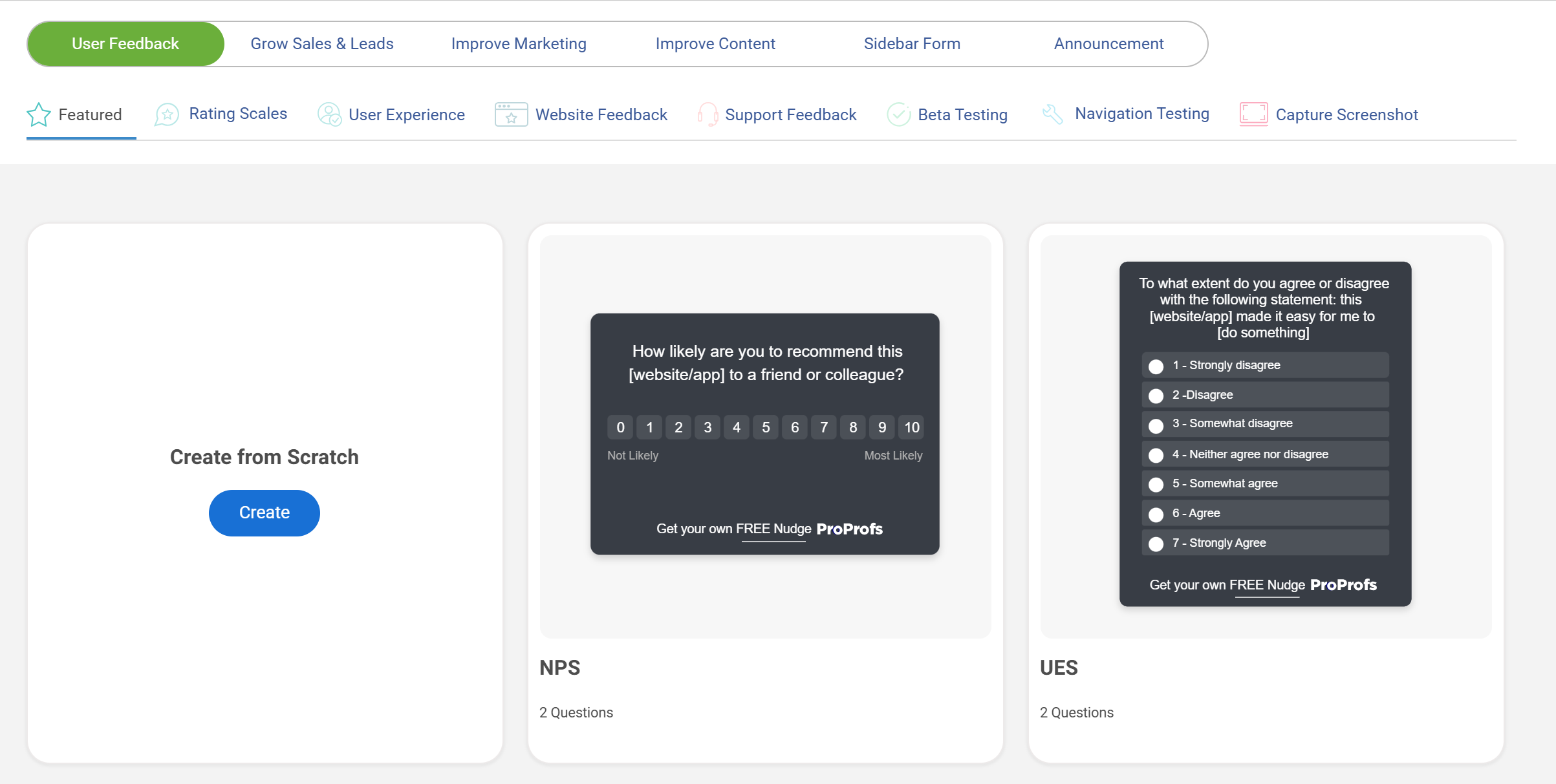Did you know that 73% of your consumers might switch to a competitor after multiple bad experiences? Honestly, that’s a huge chunk of your potential customer base! It’s a clear reminder that customer loyalty isn’t something you can take for granted—it’s something you have to earn and keep earning.
I’ve seen how even minor missteps—like a delayed response or unclear communication—can snowball into bigger issues. It’s frustrating for everyone involved. That’s why setting clear customer satisfaction goals isn’t just a business to-do; it’s a must-have strategy.
For me, it’s about more than fixing what’s broken. It’s about creating an intentional plan to keep customers happy and returning. When you focus on the right goals, you can turn challenges into opportunities, strengthen relationships, and grow your business in ways that stick.
Let’s explore how to make that happen. But first, what is customer satisfaction?
What Is Customer Satisfaction?
Customer satisfaction measures how well your business is delivering on the promises you make. And trust me, it’s not just a nice-to-have—it’s your way of building loyalty, earning trust, and growing sustainably.
It’s the feeling customers get when your product or service doesn’t just meet expectations but leaves them thinking, “That was worth it.” It’s about their entire experience—how easy it was to interact with you, how supported they felt, and whether they believe your business delivered on its promises.
It’s not just a feel-good metric, either. Satisfied customers stick around, spend more, and tell others. And here’s the deal: companies that focus on customer experience see an 80% increase in revenue. That’s not just theory—that’s the real-world impact of making satisfaction a priority.
Ignore it, and you risk being part of that 73% churn stat we discussed earlier. It’s really that simple.
What Are Customer Satisfaction Goals?
Customer satisfaction goals are the targets you set to ensure your customers are happy with your products, services, and overall experience. These goals aren’t just about making customers smile—they’re about creating long-term relationships that drive repeat business, positive word-of-mouth, and sustainable growth.
For example, a customer service objective could be improving your response time for support tickets to under 24 hours. Another might be increasing your overall customer satisfaction score by 10% within the next quarter. These goals give you a concrete way to measure how well you meet customer needs and where to improve.
The beauty of setting satisfaction goals is that they’re not one-size-fits-all. They can focus on specific areas like resolving complaints faster, enhancing product usability, or making your return process seamless. Whatever the goal, the endgame is the same: ensuring your customers feel valued and satisfied enough to stay loyal to your brand.
10 Key Customer Satisfaction Goal Examples
1. Improve Response Time for Customer Support
Customers value prompt solutions to their problems, and slow responses can lead to dissatisfaction and even lost loyalty. Improving response times shows that you prioritize their needs and respect their time. A goal like “Reduce average response time for support tickets from 48 hours to 24 hours by the end of the quarter” sets a clear benchmark for your team to work towards.
How to Achieve It:
- Add live chat to your website/app to provide instant support for common issues.
- Use chatbots to handle repetitive queries, freeing agents to focus on complex issues.
- Monitor peak times and ensure adequate staffing to handle increased ticket volumes.
- Track response times using customer feedback management tools like Qualaroo or Zendesk and set internal benchmarks.
Impact: Faster responses lead to increased customer trust, higher satisfaction scores, and a reduced likelihood of churn.
2. Boost Customer Satisfaction Scores (CSAT)
A CSAT score directly reflects how well your business meets customer expectations. Raising this score signifies that you’re delivering experiences that truly resonate with your audience. Setting a goal like “Increase our CSAT score from 85% to 90% in six months by training support staff and introducing a knowledge base” creates a structured approach to achieving this improvement.
How to Achieve It:
- Regularly train your support team to handle customer queries empathetically and efficiently.
- Provide self-help resources like FAQs or tutorial videos to empower customers.
- Use short surveys post-interaction to gauge satisfaction and address concerns immediately.
- Analyze feedback trends and act on recurring issues involving service quality or product performance.
Impact: Higher CSAT scores indicate a well-rounded customer experience, improving retention and promoting positive word-of-mouth.
3. Enhance First-Contact Resolution (FCR)
FCR is a critical metric that showcases your team’s ability to address customer concerns efficiently on the very first attempt. High FCR rates minimize the frustration of repeated follow-ups, directly improving customer satisfaction and streamlining operations. Setting a goal like “Increase FCR rates from 70% to 85% over the next three months by optimizing support processes and empowering agents with better tools” ensures your team focuses on resolving issues swiftly.
How to Achieve It:
- Train your team to handle diverse issues and give them the authority to make decisions.
- Equip agents with quick access to detailed resources, product guides, and customer histories.
- Optimize ticket routing to ensure customers are connected to the most relevant agent.
- Regularly monitor FCR rates and identify barriers preventing first-contact resolutions.
Impact: Higher FCR rates enhance customer satisfaction and reduce the cost and time spent on repeated interactions.
4. Reduce Customer Churn
Churn occurs when customers decide to part ways with your business, often without clear feedback. Knowing the root causes of churn is essential to keeping your customer base intact. A goal like “Lower customer churn rate by 15% within the next year by implementing a customer retention program and personalized follow-ups” provides a proactive approach to tackling this challenge.
How to Achieve It:
- Monitor customer behavior and segment churn-prone customers based on inactivity or complaints.
- Use tailored emails, offers, or loyalty rewards to re-engage customers at risk of leaving.
- Gather insights from customers who leave to understand their pain points and make improvements.
- Reach out to customers showing signs of dissatisfaction before they churn.
Impact: Reduced churn improves revenue stability, increases customer lifetime value, and builds brand loyalty.
5. Increase Positive Reviews
Customer reviews shape credibility and influence buying decisions. Encouraging satisfied customers to share feedback enhances trust and attracts new buyers. A focused goal like “Generate 50 positive reviews on Google and Trustpilot within the next quarter by introducing a post-purchase feedback request system” ensures actionable steps. Automating requests and simplifying the review process helps build a stronger online reputation.
How to Achieve It:
- Send automated emails or SMS messages requesting reviews after successful transactions.
- Offer small rewards like discounts or loyalty points for leaving honest reviews.
- Offer a simple way to leave reviews by providing direct links to platforms like Google or Yelp.
- Acknowledge all positive or negative reviews to show you value customer feedback.
Impact: Positive reviews improve trust, attract new customers, and boost SEO rankings for your brand.
6. Improve Net Promoter Score (NPS)
NPS is one of the most reliable metrics for understanding customer loyalty. Asking customers how likely they recommend your business to others helps you measure their satisfaction and gain their trust and enthusiasm for your brand. Setting a goal like “Increase NPS from 60–70 in 6 months by addressing feedback from Detractors and refining our onboarding process” provides a clear path for actionable improvements.
How to Achieve It:
- Divide responses into Promoters, Passives, and Detractors to address specific needs.
- Reach out to understand their frustrations and provide solutions promptly.
- Simplify the onboarding process to make new customers feel comfortable with your product.
- Encourage Promoters to leave reviews or refer others by rewarding their loyalty.
Impact: A higher NPS translates into increased customer loyalty, advocacy, and business growth.
7. Enhance Product Usability
Customers who find a product intuitive and seamless to use are likelier to stick around and recommend it to others. However, if usability issues persist, they can quickly lead to frustration and churn. Setting a clear goal like “Reduce product usability complaints by 20% within six months by conducting quarterly usability testing and implementing suggested improvements” gives your team a structured plan to tackle these challenges.
How to Achieve It:
- Test your product with real visitors on a regular basis to identify areas of confusion or difficulty.
- Address the most common usability issues first to create immediate improvements.
- Provide clear and concise user manuals, FAQs, or tutorials.
- Keep on refining your product based on user feedback.
Impact: Enhanced usability improves user satisfaction, reduces support queries, and encourages repeat use.
8. Increase Customer Retention
Customer retention is one of the most cost-effective strategies for business growth. Loyal customers also tend to spend more, refer others, and are less likely to be swayed by competitors. A retention-focused goal, like “Increase customer retention rates from 75% to 85% over the next year by introducing a loyalty rewards program,” isn’t just strategic—it’s a direct investment in your company’s long-term success.
How to Achieve It:
- Reward repeat customers with discounts, exclusive offers, or points.
- Use customer data to send tailored promotions based on past purchases.
- Stay connected through newsletters, exclusive content, or VIP events.
- Ensure a consistent and high-quality experience across all touchpoints.
Impact: Improved retention boosts revenue, strengthens relationships and increases customer lifetime value.
9. Optimize Post-Purchase Experience
The post-purchase experience is a golden opportunity to nurture long-term customer relationships and turn one-time buyers into loyal advocates. It’s about showing customers that their experience matters even after they’ve hit the “buy” button. Setting a goal like “Introduce follow-up emails with personalized tips and offers to 90% of customers within two days of purchase” is a strategic way to keep the momentum going and deepen customer trust.
How to Achieve It:
- Use automated emails to thank customers, provide usage tips, or offer related product +recommendations.
- Ask for post-purchase feedback to identify areas for improvement.
- Include contact details for support in case they encounter issues.
- Offer discounts or bundle deals in follow-up communications.
Impact: A great post-purchase experience increases repeat business, reduces returns, and builds loyalty.
10. Elevate Employee Engagement (for Customer Satisfaction)
When your team feels valued, supported, and motivated, it naturally reflects in customer interactions. This isn’t just about making employees happy but a strategic way to enhance customer satisfaction and loyalty. Setting a goal like “Achieve an eNPS score of 80 or higher by the end of the year through better training programs and workplace initiatives” helps you focus on building a team that’s aligned, productive, and enthusiastic about their work.
How to Achieve It:
- Regularly gather feedback to understand employee satisfaction and engagement levels.
- Teach your employees the skills and provide them with the tools needed to succeed in their roles.
- Celebrate employee achievements and reward exceptional performance.
- Embrace collaboration, a supportive work environment, and open communication.
Impact: Engaged employees create better customer experiences, leading to higher satisfaction and loyalty.
What Is the Importance of Customer Satisfaction Goals?
We all know customer satisfaction is a big deal, but why bother setting specific goals? Why not just cross your fingers and hope things work out? The truth is, without clear goals, you’re leaving too much to chance. Here’s why they matter:
- They Provide Clear Direction
Without defined goals, your efforts to improve customer satisfaction can feel aimless. It’s like steering a ship without a map—you might move, but not necessarily in the right direction. Customer satisfaction targets provide that much-needed clarity. They pinpoint where you need to go, whether it’s improving response times, resolving complaints faster, or enhancing the quality of your service.
- They Sharpen Your Focus
In the daily grind of running a business, it’s easy to get distracted by urgent tasks that aren’t impactful. Goals keep your focus sharp by highlighting what truly matters—creating better customer experiences. They act as a filter for your efforts, ensuring time and resources go toward initiatives that improve satisfaction, such as refining support processes or training your team.
- They Inspire Your Team
When your team knows exactly what they’re working towards, it creates a sense of purpose. Clear customer satisfaction objectives energize employees by showing them how their work contributes to the bigger picture. Whether it’s reducing resolution times or increasing positive feedback, these targets unite everyone under a shared mission, encouraging collaboration and dedication.
- They Help Measure Success
It’s impossible to know if you’re succeeding without a way to measure progress. Specific goals give you that metric. For example, tracking improvements in your Net Promoter Score (NPS) or customer retention rate helps you understand what’s working and where you’re falling short. These measurements provide actionable insights, helping you fine-tune your strategies for continuous improvement.
- They Fuel Business Growth
Satisfied customers are more than just happy—they’re loyal. They return, spend more, and bring others with them through word-of-mouth recommendations. By setting goals around satisfaction, you’re directly investing in growth. Metrics like repeat purchase rates or referral rates can showcase how these targets translate into tangible business outcomes.
- They Help Build a Customer-Centric Culture
When customer satisfaction becomes a priority, it transforms your business culture. It signals to both employees and customers that their needs come first. This shift in focus isn’t just good PR; it improves trust, fosters loyalty, and sets a standard of excellence that touches every corner of your organization.
- They Enable You to Stay Competitive
These days, customers expect seamless experiences, and they’re quick to move on if you don’t deliver. Setting and meeting ambitious satisfaction goals keeps you ahead of the competition. It allows you to consistently meet evolving expectations and stand out as a brand that genuinely values its customers.
FREE. All Features. FOREVER!
Try our Forever FREE account with all premium features!
How to Improve Customer Satisfaction Using SMART Goals
Setting customer satisfaction goals is like planning any important project—you wouldn’t just wing it and hope for the best. You need a solid plan that keeps you on track and helps you achieve what you set out to do. That’s where SMART goals come in. They’re not just any goals; they’re goals with a purpose, designed to keep your efforts focused and measurable.
So, what does SMART mean? It’s a framework to create goals that are:
Specific: Your goals should be clear and detailed. Instead of saying, “Let’s improve customer satisfaction,” a specific goal would be, “Increase our Net Promoter Score (NPS) by 10 points.” It leaves no room for confusion about what you’re trying to achieve.
Measurable: How will you know if you’re succeeding? Measurable goals give you the answer. Set objectives you can track, like “reduce customer churn by 5%” or “boost positive reviews by 20%.” Numbers make it easier to monitor progress.
Achievable: Goals need to stretch you but still be realistic. Setting goals like “double our NPS in a month” might sound ambitious, but it’s not practical. Consider what’s doable given your resources, team size, and time constraints.
Relevant: Your goals should matter to your business and your customers. Don’t just set goals for the sake of it—make sure they contribute to what really matters, like improving the customer experience or addressing specific pain points.
Time-Bound: Deadlines keep you focused. Goals like “reduce response times to under 24 hours within the next six months” or “increase NPS by 10 points this year” give you a timeline to work with, keeping the pressure on to achieve them.
Here’s an example of a SMART goal for customer satisfaction:
“Improve NPS by 10 points within 12 months by launching a proactive feedback program and reducing response times to under 24 hours.”
This goal works because:
- It’s Specific (increase NPS by 10 points).
- It’s Measurable (tracked through NPS scores).
- It’s Achievable (doable with feedback and response time improvements).
- It’s Relevant (focuses on customer satisfaction, a core objective).
- It’s Time-Bound (to be achieved in 12 months).
By setting SMART goals, you’re not just taking a shot in the dark—you’re building a foolproof plan for success. You can easily track progress, stay accountable, and offer better customer experience for real growth.
How to Handle Customer Service Setbacks
No matter how much effort you put into improving customer satisfaction, certain challenges—like negative feedback, poor response times, or inconsistent service—can hold you back. Overcoming these hangups requires a proactive approach and actionable strategies that align with customer needs.
Here’s how you can tackle the most common roadblocks:
1. Address Negative Feedback
Receiving complaints can sting, but it’s also a goldmine of insights. Instead of avoiding it, tackle it head-on. Actively listen to your clients, acknowledge their concerns, and show them you’re committed to making things right. Use tools like Qualaroo or feedback widgets to gather real-time insights and quickly identify recurring pain points.
2. Resolve Delayed Responses
Slow support response times frustrate customers and make them feel undervalued. Prioritize faster resolutions by investing in better support tools like live chat or automated ticketing systems. Set clear internal benchmarks, such as responding to all queries within 24 hours, and provide ongoing training for your support team to handle issues more efficiently.
3. Ensure Consistent Customer Experiences
Inconsistencies in service—like varying quality across different channels—can erode trust. Create a unified customer experience by aligning your teams with standardized processes and shared goals. For instance, establish clear guidelines for handling complaints, responding to inquiries, and providing post-purchase support to maintain consistency across touchpoints.
4. Break Silos Between Departments
Customers don’t care which department they’re talking to—they just want their issues resolved. Break down silos between teams like sales, marketing, and customer support to ensure seamless communication. Use shared CRM systems to centralize customer information, making it easier for teams to collaborate and provide cohesive solutions.
5. Keep Up with Changing Customer Expectations
Customer expectations evolve, and what satisfied them yesterday might not work today. Regularly survey your customers to stay updated on their needs and preferences. For example, if customers increasingly prefer self-service options, focus on expanding your knowledge base or implementing AI-driven chatbots for quick answers.
6. Reduce Churn Through Proactive Engagement
Don’t wait until customers leave to act. Proactively engage with them through personalized follow-ups, loyalty programs, and exclusive offers. Monitor key churn indicators, such as decreased usage or unresolved complaints, and intervene before dissatisfaction turns into churn.
7. Streamline Complex Processes
Whether it’s a confusing checkout process or a hard-to-navigate website, complexity drives frustration. Simplify these processes by testing them regularly and asking for customer feedback. For instance, usability tests can reveal roadblocks in the user journey that might otherwise go unnoticed.
How Can Qualaroo Help Improve Your Customer Satisfaction Score?
If improving customer satisfaction feels like trying to hit a moving target, Qualaroo can help you focus. With Nudges™, you can gather real-time insights right where the action happens—like on your website, in your app, or even after a purchase. And the best part? You can do it all without disrupting the user experience.
What makes Qualaroo stand out is its precision. It knows when to ask the right questions and who to ask them to. Whether it’s figuring out why someone dropped off at checkout or what they love most about your product, Qualaroo turns feedback into clear, actionable steps. Plus, its analytics dashboard makes spotting trends and acting on them a breeze.
How to Create a Customer Satisfaction (CSAT) Survey: Easy Steps
Let me walk through how to create a customer experience survey that works harder for you:
- Step 1: Start Fresh in the Dashboard
Log into your Qualaroo account and hit CREATE NEW. When the options pop up, select CHOOSE TEMPLATE to keep things simple and quick.
- Step 2: Pick the Customer Satisfaction Template
Scroll through the ready-made templates (yes, Qualaroo has thought this through for you) and select Customer Satisfaction (CSAT). Hit Use this Template to start customizing.
- Step 3: Decide Where It Pops Up
Enter the target URL where you want your survey to appear. For example, you could place it on a checkout or “thank you” page after a purchase. This way, you’re catching feedback while the experience is still fresh.
- Step 4: Make It Your Own
Use the EDIT option to tweak the questions. Keep them relevant—ask about their experience, the ease of navigating your site, or how likely they are to return. You can also add your logo, adjust the tone, and make it feel like a natural part of your brand.
- Step 5: Target the Right Audience
Hop into the TARGETING section to set who sees your Nudge™. Want to survey users who’ve been on your pricing page for more than a minute? Done. Want it to show up only for first-time visitors? Easy. The targeting is super flexible.
- Step 6: Polish the Design
In the DESIGN section, make your survey look sharp. Match your brand colors, adjust fonts, and tweak button styles to make it seamless and inviting.
- Step 7: Save Your Progress
Once you’re happy with how it looks and works, click SAVE and toggle it to ACTIVE. That’s it—your Nudge™ is live and ready to start gathering insights.
Your Roadmap to Happier Customers Starts Here
Customer satisfaction isn’t about perfection but listening, learning, and constantly improving. When you align your efforts with thoughtful goals and precise insights, you’re not just meeting expectations—you’re exceeding them.
So, if improving customer satisfaction has been on your to-do list for too long, now’s the time to take action. With Qualaroo’s smart Nudges™, you’re not just asking questions—you’re getting answers that actually make a difference.
Start small, stay focused, and make every customer interaction count!
FAQs
What customer satisfaction goal should you aim for?
The right goal varies by business, but it should always be evident, measurable, and aligned with customer needs. For example, you might aim to increase your CSAT score to 90% or higher, improve your NPS by 10 points over six months, or reduce customer churn by 15% within a year. These goals focus on delivering better experiences and fostering long-term loyalty.
What are the 5 basic levels of customer satisfaction?
Customer satisfaction can be divided into five levels. Unsatisfied customers are disappointed and unlikely to return. Neutral customers feel indifferent, with no strong opinions. Satisfied customers meet their expectations, while delighted customers feel pleased and confident about the experience. At the top, delighted customers are thrilled, often advocating for your brand and driving referrals.
What are the three pillars of customer satisfaction?
The three pillars of customer satisfaction are quality, experience, and personalization. Quality ensures your product or service reliably meets customer needs. The overall experience, including ease of interaction and support, creates a positive impression. Personalization deepens connections by tailoring services to individual preferences, showing customers they are valued.
What are the three foundations of excellent customer service?
Excellent customer service is built on responsiveness, empathy, and consistency. Being responsive demonstrates respect for customers’ time and urgency. Empathy ensures customers feel understood and supported during interactions. Consistency reinforces trust by delivering reliable service at every touchpoint, making customers more likely to stay loyal.
FREE. All Features. FOREVER!
Try our Forever FREE account with all premium features!
 We'd love your feedback!
We'd love your feedback! Thanks for your feedback!
Thanks for your feedback!






